Solar gardens or farms are becoming commonplace in most parts of the world because solar is one of the cheapest clean energy sources.
However, the initial capital cost of setting up the project can be high for some and affordable for others. It depends on your pocket.
We have analyzed the solar farm cost and its ROI to determine the solar payback period below. Let’s get right into it!
What is a Solar Farm?
Solar farms are primarily photovoltaic power stations containing multiple solar panels for converting sunlight into electrical energy. Compared to rooftop solar panels, solar farms have panel arrays mounted on the ground and cover a wide area. The large installation produces enough energy to power several homes.
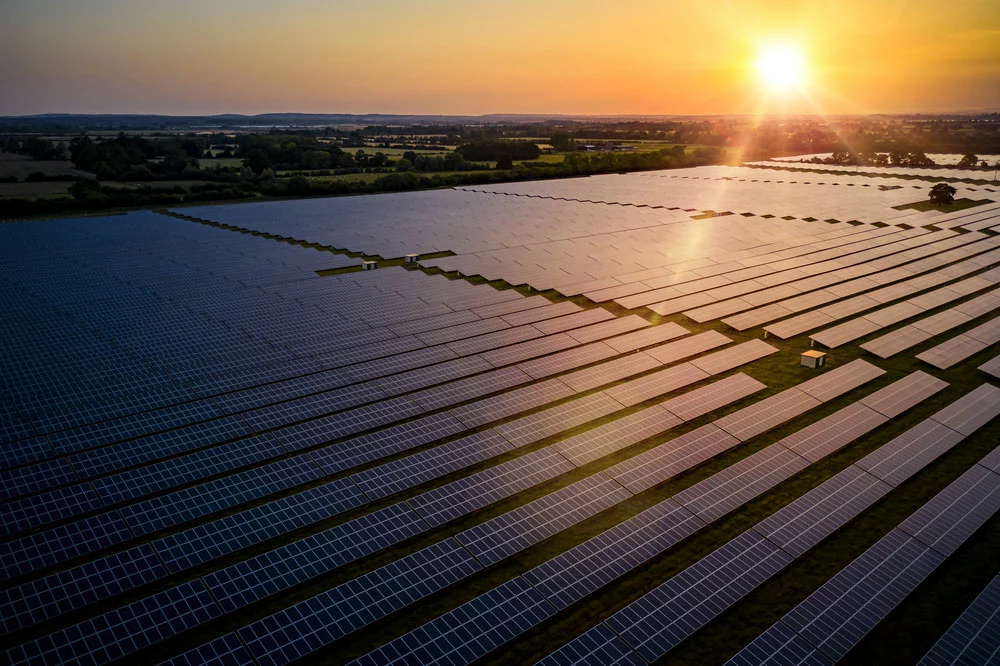
A solar farm
But the solar farm can also have a Concentrated Solar Power (CSP) system. This setup uses mirrors instead of solar panels to reflect sunlight to a central energy-absorbing collector. The heated middle point then provides the energy required to produce electrical power.

A concentrated solar power plant
Types of Solar Farms
There are two types of solar farms.
Utility Scale Solar Farms
These are large solar farms that produce at least 1 Megawatt of power. In most cases, utility companies own these solar power plants. But investors or solar companies can set up such a solar panel farm and sell the solar energy to utility companies at a wholesale price using Power Purchase Agreements (PPAs).
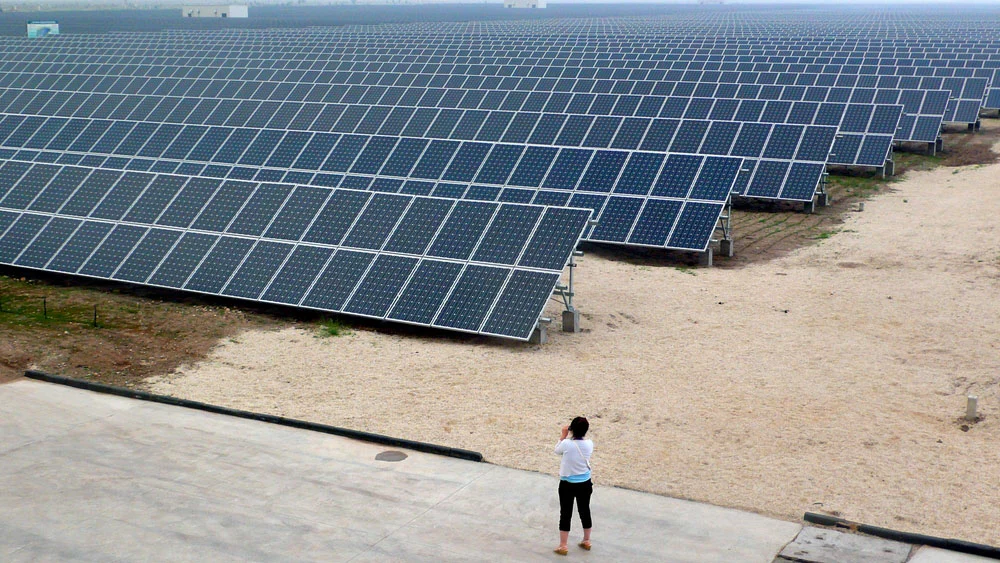
A utility-scale solar farm
In this case, the customer is the utility or power grid company, which distributes and sells the power to industrial, commercial, and residential clients.
Community Solar Farms
Instead of placing solar panels on their roofs, some homeowners pool resources and build solar gardens to share power in the community.
This renewable energy solar plant can cover one or several acres and generates 100kW to 5MW. Therefore, they are smaller than utility-scale solar projects and sell power directly to the community members.
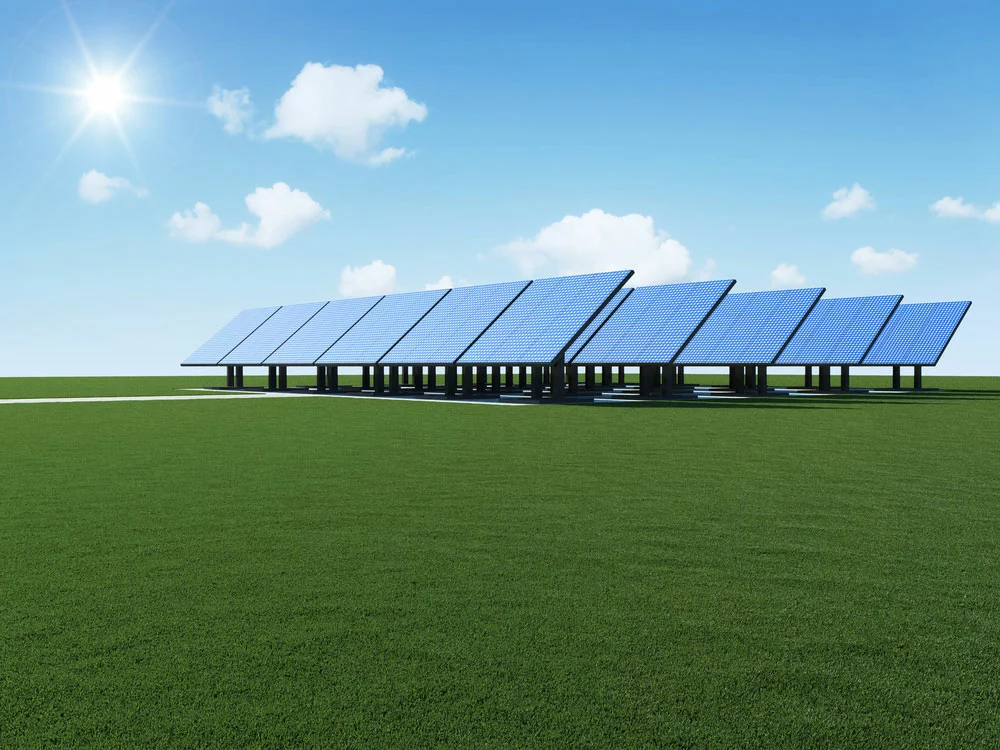
A community solar garden
Non-project members can buy a share of the installation to access this clean energy or buy the power and pay monthly utility bills to the community. In some cases, the community can sell the solar energy to power grid companies, then get power bills adjusted depending on the solar energy generation from the farm.
How Much Does a Solar Farm Cost? Solar Farm Cost Breakdown
There are two ways to consider the cost of the solar farm project.
Cost Per Acre
A 1-acre solar farm costs approximately $400,000 to $500,000 to set up. Although the upfront cost is high, the maintenance costs afterward are negligible. So you will get good returns in the long run.
Cost Per Watt
The solar farm cost per watt is about $0.8 to $1.36. One megawatt is the same as one million watts. So the cost of setting up a 1-megawatt solar farm will range anywhere from $800,000 to $1.36 million. With this power, the installation can run about 200 homes.
Why a Community Solar Farm is Better than a Rooftop Mounting
If uncertain of whether it is better to set up the solar system on your roof or do a community project, consider this cost comparison. Residential solar installations cost about $2.5 to as high as $3.5 per watt.
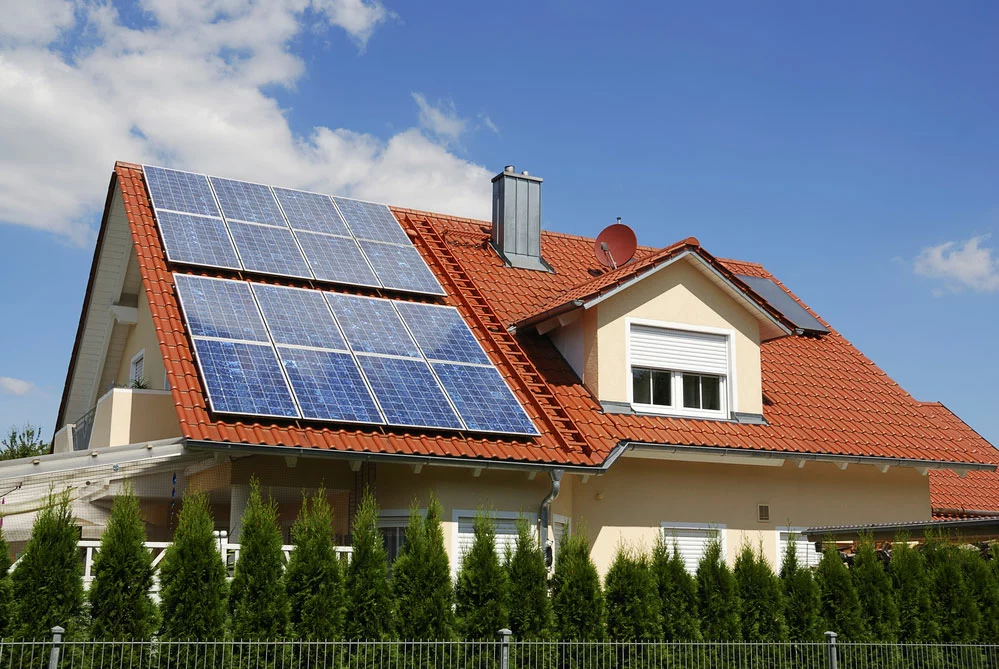
Residential rooftop solar installations
This price is significantly higher than the $0.8 to $1.36 solar farm installation cost. So it makes economic sense to do the community installation.
Total Cost
Investing in a solar energy farm is pricey. You need about 6-8 acres to build a 1MW solar energy farm. Using the average cost of $450,000 per acre, you are looking at $2.7-$3.6 million. This cost covers all the components, which include the following.
- Solar panels
- Battery storage
- Panel holding racks
- Rack foundations
- Connectors and cables
- Inverters
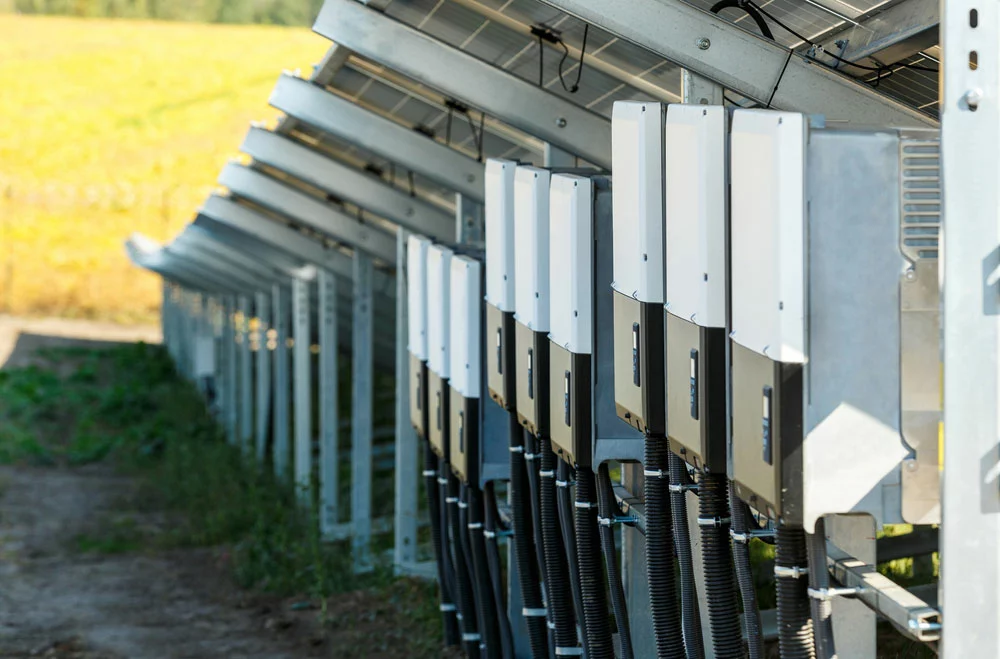
Solar panel inverters
- Monitoring systems
- Panel to grid and battery connecting equipment
- Security equipment like cameras and fences
Labor costs will take about 10% of the total project cost. Also, you must develop the land. And if you have to factor in the price of buying or leasing land if you don’t have it. As for maintenance, you need workers to clean the panels regularly and cut any vegetation that blocks sunlight.
Solar Farms Cost Reduce Tips
As a solar farm developer, you can make about $14,000 to $40,000 annually per megawatt. And you can minimize your domestic power costs by up to 15% yearly. Although the return on investment looks good, you can lower your initial investment further and increase revenues using these tips.
Look for Investors
You can look for locals who are interested in the clean energy project. These can act as investors who will benefit by having cheap, clean solar power in their homes.
Apply for Government Incentives/Tax Credits
Also, you can apply for local, state, and federal government tax incentives to lower the investment cost.
Lease Your Land
Alternatively, you can lease your land if setting up the project is too expensive. If a solar developer shows interest in your parcel, you can generate a passive income of around $300 to $2,000 per acre annually. These solar field lease rates usually depend on the location.
Think Outside The Box
If you have a pond or reservoir for fish farming or other economic activities, you can cover its surface with solar panels and still have land for agriculture. Effectively, you would be harvesting fish, electricity, and farm produce from the same property.
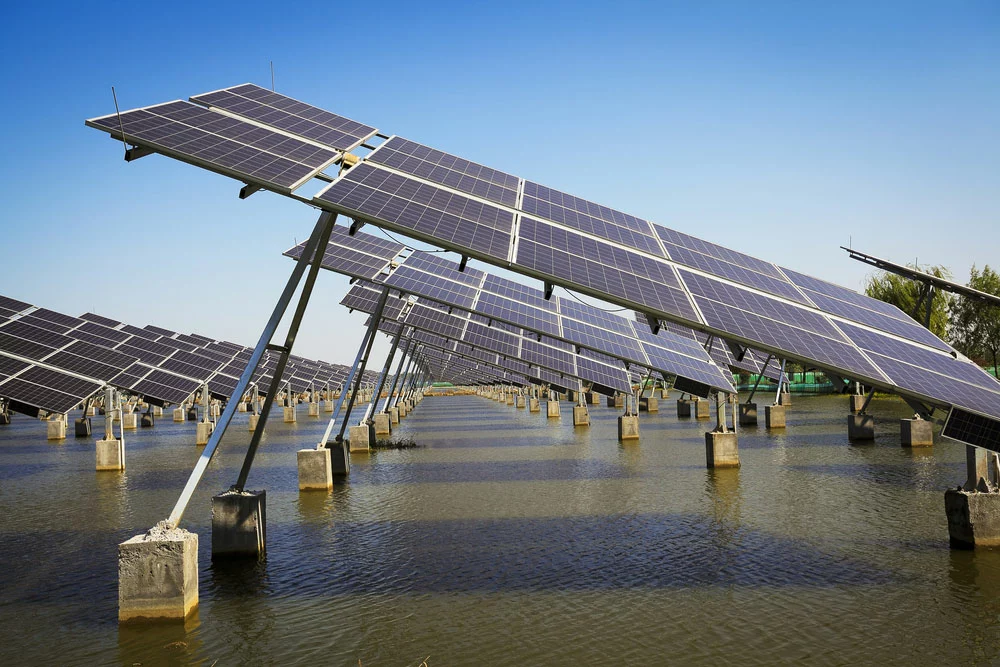
A solar farm above a water body
Factors Affecting the ROI
As you might have noticed, solar farm returns vary by a wide margin, which affects the ROI. Factors that affect the earning potential of the solar garden/farm include the following.
Amount of Sunlight
The sun’s intensity directly affects the generated solar capacity. Therefore, areas with cloudy/rainy weather or a few sunny months in the year will extend the installation’s payback period.
You can take measures to ensure the solar farm output is as high as possible. For instance, consider using single-axis sun tracking or solar tracking equipment to keep the panels facing the sun throughout the day.
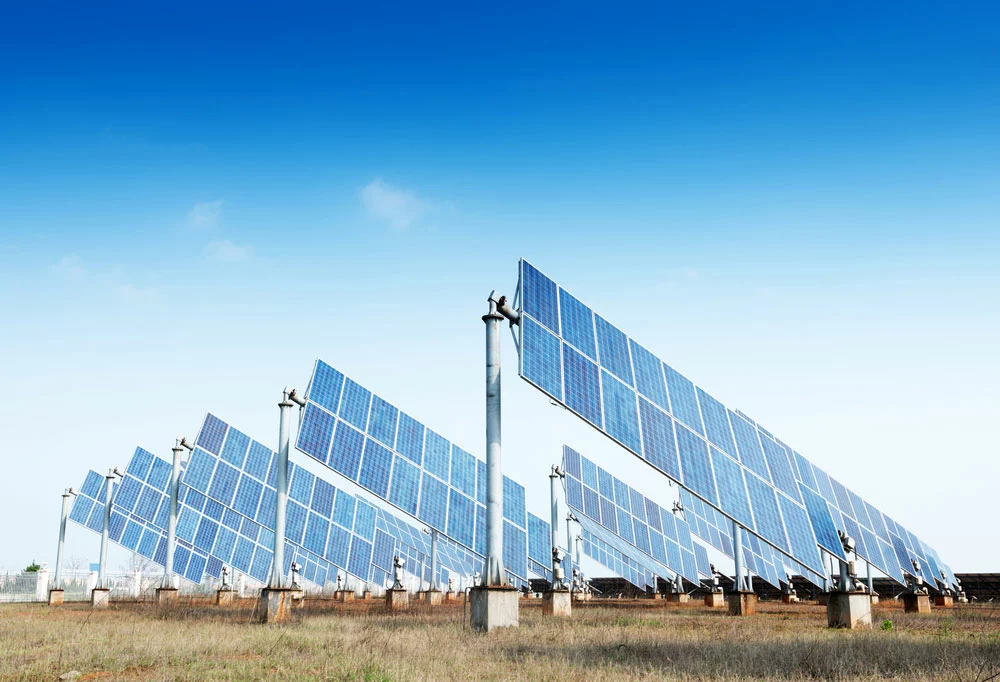
Solar panels are installed on a tracking system.
Also, ensure the bushes under the panels don’t overgrow to cover the solar cells and keep the solar surfaces clean.
Land Size
Solar farm operators with large acre fields have better economies of scale, so their returns will be higher. Generally, you need about 100 square feet of land to generate 1kW.
Remember, you need space for non-solar equipment to support the system. The ratio of land used for non-solar equipment to the area under solar cells will be higher in small community solar plants than in large ones.
Therefore, utility-scale solar companies with larger farms will have more acres of land under solar, resulting in better economies of scale and higher profit margins.
Proximity to the Electrical Grid
Besides the land size, the solar development project will require less infrastructure to connect it to the national grid if it is closer to the power lines. Ideally, the piece of land should have the following features.
- Good road access
- Be less than two miles from a substation
- Be at most two miles away from a substation
Terrain
The land type or terrain also has an impact on the development cost. Solar installations require flat land. So if the parcel has trees, buildings, obstructions, or hilly spots, you will have to spend more to clear and level it.
The process will increase the budget and lower the return on investment.
Location
Solar panel systems installed in Massachusetts and Rhode Island tend to have the highest return on investment. The cost of electricity is high in these snowy states, and you can get your money back in about four years. States like New York, New Jersey, and Hawaii also have high returns.
Funding a Solar Farm
Although solar fields require a significant initial investment, you should know that solar market prices have plummeted by over 80% since 2010. So they are attractive investment options, and you can explore the following funding options to set up the project.
Self Funding
Land property owners with enough capital to venture into the solar industry can fund the project in its entirety. The benefits include earning maximum profits, government incentives, and accessing cheap, clean energy.
If the project has a large installed capacity, you can sign a long-term power purchase agreement with a utility company to offtake the power.
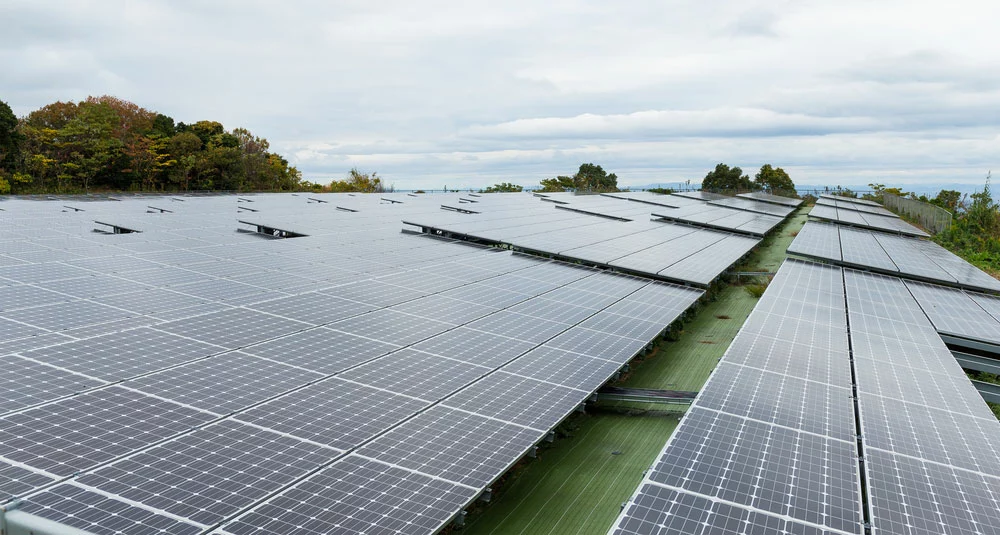
Solar project
Part Funding
Partial funding involves developing an agreement or business plan between you (the individual property owner) and the solar developer. The solar development agreement should indicate how the two parties will share the benefits, costs, and revenues.
Land Leasing
As explained earlier, land leasing can earn you a guaranteed long-term rental income of up to $2,000 per acre per annum.
Wrap Up
In summary, utility-scale or community-solar projects are vital renewable energy sources that play a crucial role in combating climate change.
As an investor in green energy, you should understand the cost of building a solar power farm and the available options for maximizing ROI.
We hope this article will help you achieve that. Contact us if you have any questions, and we’ll get back to you asap.
